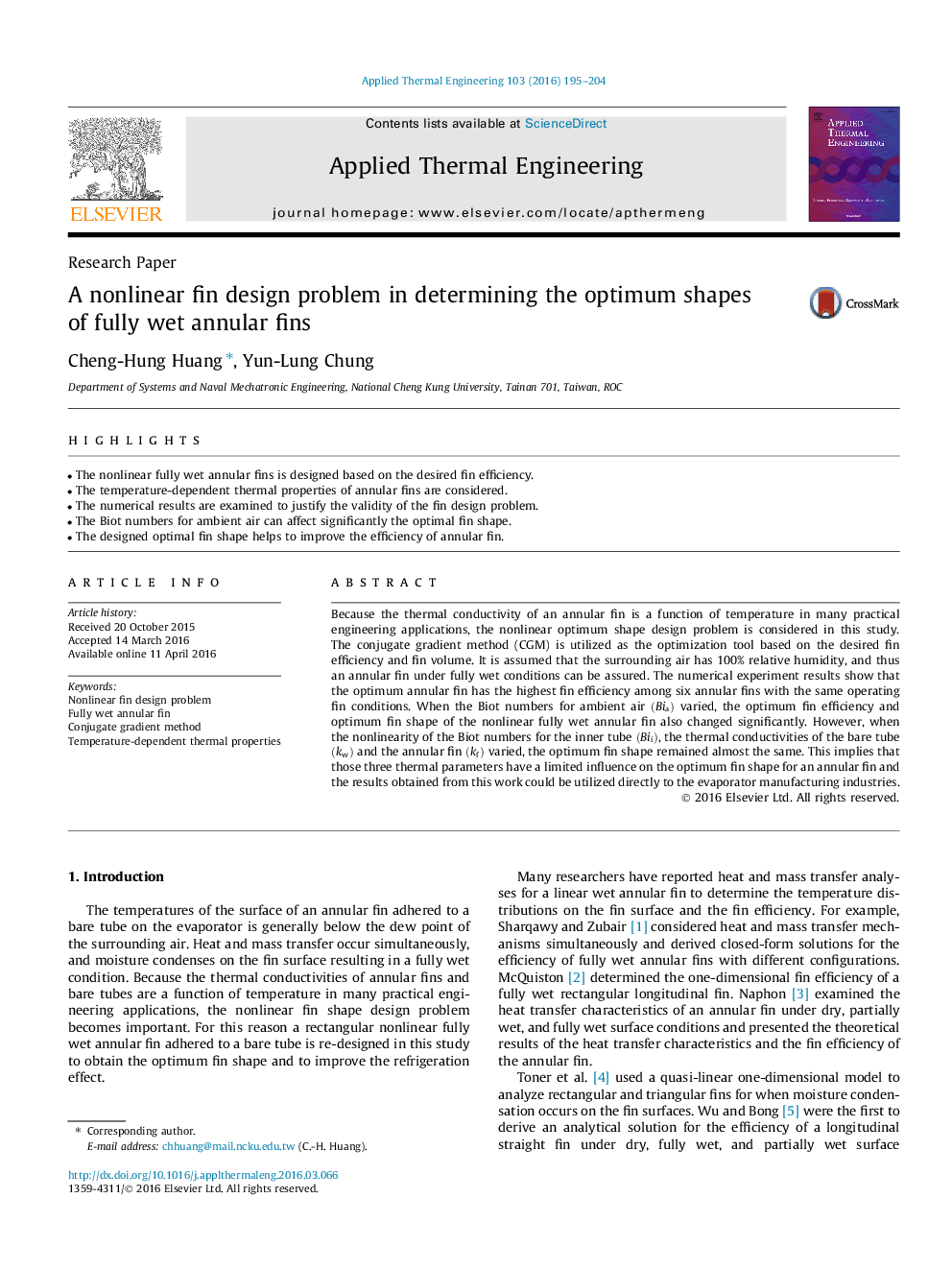| Article ID | Journal | Published Year | Pages | File Type |
|---|---|---|---|---|
| 7047618 | Applied Thermal Engineering | 2016 | 10 Pages |
Abstract
Because the thermal conductivity of an annular fin is a function of temperature in many practical engineering applications, the nonlinear optimum shape design problem is considered in this study. The conjugate gradient method (CGM) is utilized as the optimization tool based on the desired fin efficiency and fin volume. It is assumed that the surrounding air has 100% relative humidity, and thus an annular fin under fully wet conditions can be assured. The numerical experiment results show that the optimum annular fin has the highest fin efficiency among six annular fins with the same operating fin conditions. When the Biot numbers for ambient air (Bia) varied, the optimum fin efficiency and optimum fin shape of the nonlinear fully wet annular fin also changed significantly. However, when the nonlinearity of the Biot numbers for the inner tube (Bii), the thermal conductivities of the bare tube (kw) and the annular fin (kf) varied, the optimum fin shape remained almost the same. This implies that those three thermal parameters have a limited influence on the optimum fin shape for an annular fin and the results obtained from this work could be utilized directly to the evaporator manufacturing industries.
Keywords
Related Topics
Physical Sciences and Engineering
Chemical Engineering
Fluid Flow and Transfer Processes
Authors
Cheng-Hung Huang, Yun-Lung Chung,
